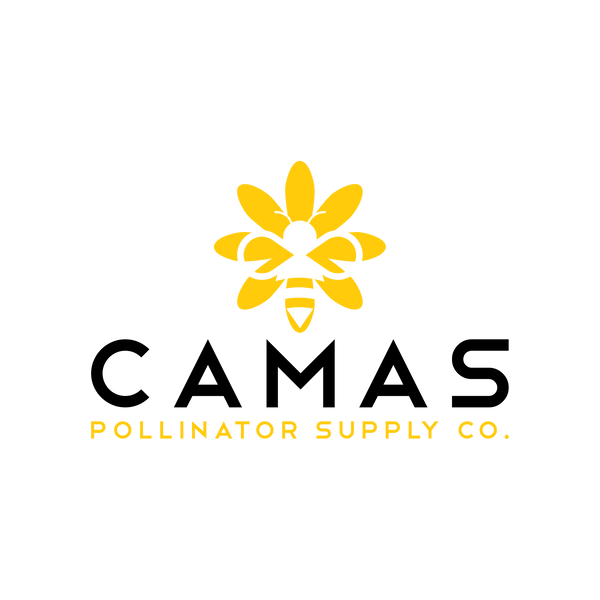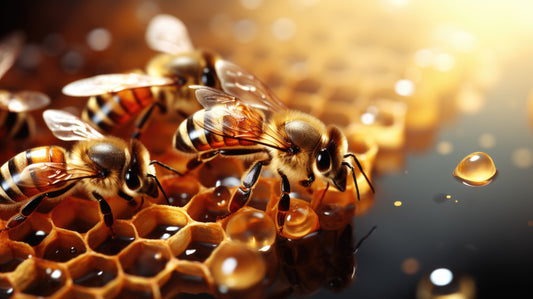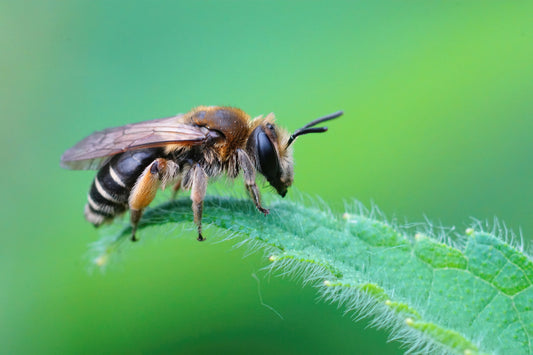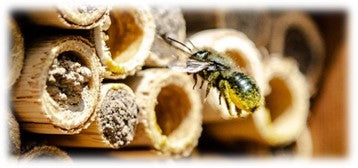The science behind why regional plant selection makes or breaks your pollinator garden

Walk into any garden center and you'll find shelves lined with "pollinator-friendly" plants from around the world. Lavender from the Mediterranean, bee balm from eastern North America, and butterfly bush from Asia all promise to attract beneficial insects. But here's what the labels don't tell you: not all pollinator plants are created equal.
The distinction between native and non-native plants represents one of the most crucial decisions you'll make for your pollinator garden's success. Understanding this difference isn't just botanical trivia—it's the foundation of creating ecosystems that truly support local wildlife.
The Evolutionary Partnership
For millions of years, native plants and native pollinators evolved together in intricate partnerships. Local bee species developed specialized mouth parts perfectly sized for native flower shapes. Native plants adjusted their bloom times to coincide with pollinator life cycles. This co-evolution created incredibly efficient relationships that modern gardens can either support or disrupt.
Consider the mason bee and the native cherry tree. Mason bees emerge from their winter cocoons precisely when cherry trees begin blooming—usually within a few days of each other. This timing isn't coincidental; it's the result of thousands of years of evolutionary fine-tuning.
What Makes a Plant "Native"?
A native plant is one that occurred naturally in your region before European settlement, typically defined as pre-1492 in North America. These plants adapted to local soil conditions, climate patterns, and seasonal variations over millennia.
Non-native plants come from other geographic regions and may struggle with local conditions or fail to provide the specific resources that local pollinators require.
The Science Behind Native Plant Superiority
Research by Dr. Douglas Tallamy at the University of Delaware reveals startling differences in ecosystem value:
- Native oak trees support over 500 species of butterflies and moths
- Non-native Bradford pears support virtually zero native insects
- Native willows provide critical early-season pollen when few other sources exist
- Non-native butterfly bush offers nectar but fails to support the complete life cycles of native butterflies

The key insight: native plants support entire food webs, while many non-native plants function as ecological dead ends.
Common Misconceptions About Non-Native Plants
Myth: "If bees visit it, it must be good for them."
Reality: Pollinators may visit non-native plants when preferred native options aren't available, but this doesn't mean these plants provide optimal nutrition or support complete life cycles.
Myth: "Non-native plants bloom longer, so they're better for pollinators."
Reality: Extended bloom times in non-native plants often result from breeding for human preferences, not pollinator needs. These plants may bloom when local pollinators aren't active.
Myth: "Pollinator plants are pollinator plants regardless of origin."
Reality: Many non-native plants lack the specific chemical compounds, pollen proteins, or flower structures that native pollinators require.
Regional Specificity Matters
Even within native plants, regional ecotypes can vary significantly. A purple coneflower native to Illinois may not thrive in California's climate, despite both being "native" to North America.
Use these resources to identify truly local plants:
- Your state's native plant society
- Local extension office plant lists
- Regional botanical gardens
-
USDA Plants Database filtered by your county
The Non-Native Plants That Work
Not all non-native plants harm pollinator ecosystems. Some well-behaved non-natives can complement native plantings:
- Plants that bloom during gaps in native plant seasons
- Non-invasive species that provide late-season nectar
-
Herbs like rosemary and thyme that support specialist pollinators
The key is ensuring these plants support rather than replace native species in your landscape.
Building Your Native Plant Strategy
Start with Keystone Species
Focus on native plants that support the most biodiversity in your region. In eastern North America, native oaks, willows, and asters top the list. Western gardeners should prioritize native lupines, penstemons, and manzanitas.
Layer Your Plantings
Create vertical diversity with native trees, shrubs, and perennials. This approach mimics natural ecosystems and provides habitat for different pollinator species with varying preferences.
Plan for Succession
Ensure continuous bloom from early spring through late fall using only native species. This requires more planning than relying on long-blooming non-natives, but creates far more resilient ecosystems.
The Long-Term Impact
Gardens emphasizing native plants typically show:
- Higher pollinator species diversity (often 3-4 times more species)
- More consistent year-over-year populations of beneficial insects
- Better support for endangered or declining pollinator species
- Reduced maintenance once established
- Greater resilience during extreme weather events

Making the Transition
Suppose your current garden relies heavily on non-native plants; transition gradually. Replace non-natives as they decline naturally, and add native species to fill gaps. This approach allows established beneficial insects to adapt while building toward a more sustainable ecosystem.
Remember: every native plant you add creates ripple effects throughout your local ecosystem. You're not just gardening—you're participating in conservation efforts that extend far beyond your property boundaries.




